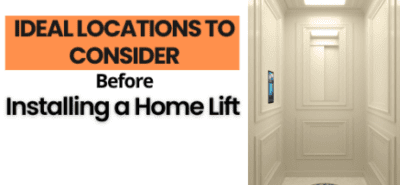A Guide for Choosing Home Lifts You Need
There are several major kinds of home elevators on the market, and it is dazzling. How to choose a suitable home elevator has become a problem that owners care about. Here is a simple popularization of several common household elevator products.
According to the type of power and related structures, it can be simply divided into the following four types:

1. Hydraulic drive home elevator
The early home elevators in Australia were basically hydraulic elevators.
Advantages of hydraulic elevators
- Hydraulic elevators have low requirements for civil structures, no machine room, only one load-bearing wall, and there are no strict requirements for the height of the top floor and the bottom pit.
- Hydraulic elevators will not run over speed, and the safety factor is relatively high, compared to traction lifts.
- The hydraulic elevator has only 2 guide rails because there is no counterweight device, so the space for the hoistway can be relatively small, saving space.
Disadvantages of hydraulic home elevators
- There would be a certain amount of motor noise
If the pump station is not isolated or located far away outdoors or in the basement, the sound of the motor and oil pump will be heard, causing noise pollution.
- Hydraulic oil leakage
After the service life of the cylinder seals expires, the hydraulic oil will leak into the well, which will be troublesome to maintain and pollute the environment.
- The speed regulation is adjusted by the oil volume and pressure, which is not as smooth as frequency control.
- Hydraulic oil is sensitive to ambient temperature.
In some cases, a radiator is required in summer. In winter, the oil temperature gets lower than the designated value. A thermostat is required, otherwise bad floor leveling would happen. In the long run, this is a significant expense.
2. Traction Home Elevator
The traction medium is wire rope or steel belt. The main working structure is similar to the gantry in a gym. One end is the car, the other end is the counterweight. A permanent magnet synchronous traction machine is used for traction work, normally located on top of the hoistway.
Advantages of traction villa home elevator
- Quiet and stable
The permanent magnet synchronous motor has no gear box. The speed of the motor is adjusted by frequency/ voltage conversion, which can call out a perfect running speed curve.
- Energy saving and environmental protection
The synchronous engine does not need to be regularly lubricated, so there is no possibility of oil leakage. The motor power is relatively small, only more than 1 kilowatt, which is very power-saving.
- Price economy
Since permanent magnet synchronous motors are the current trend of the industry, all major manufacturers lead the development and production of traction elevators, so the price is more affordable than hydraulic.
Disadvantages of Traction Home Elevator
- Higher requirements for civil construction strength, and strict requirements for the height of the top floor and the pit, which must be taken into account in the design.
- The traction elevator must have a counterweight device, so four tracks in total. Generally, 150 mm more than the hydraulic elevator.
- There are many brands of traction elevators, and the competition is fierce. While reducing costs, the choice of quality control and function becomes the key. Random selection might cause the safety factor to decrease and the failure rate to increase relatively.
The best elevator for your home will be the one that suits your needs, budget, site conditions and floor plan. When considering these factors, there are two main categories to choose from, elevator type and manufacturer.
Of course, there is a cost, and we’ve written about home lifts cost to give you an idea of your budget and associated costs.
We will share more practical knowledge about home lifts, please follow us, House of Elevators.



